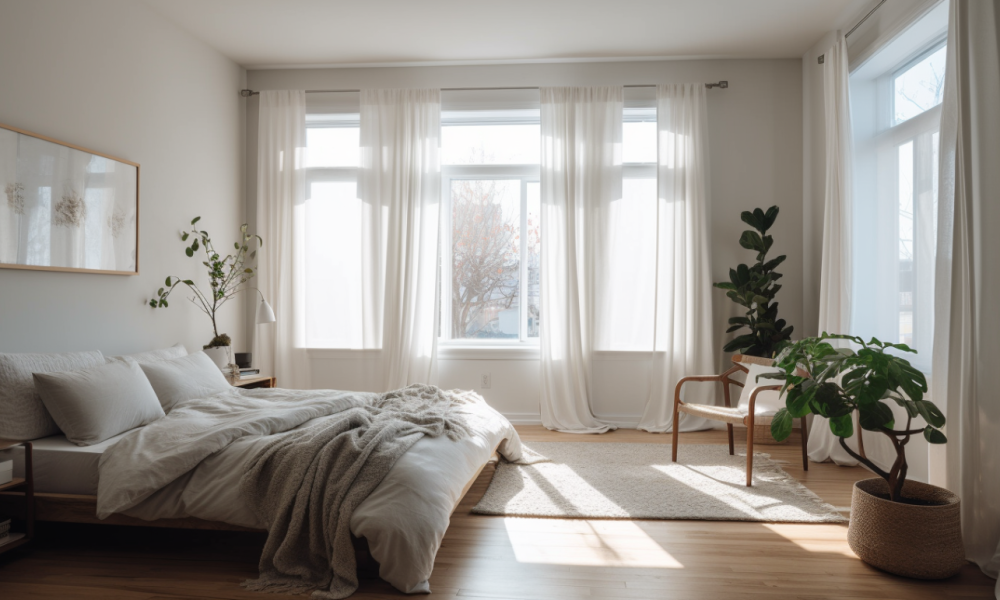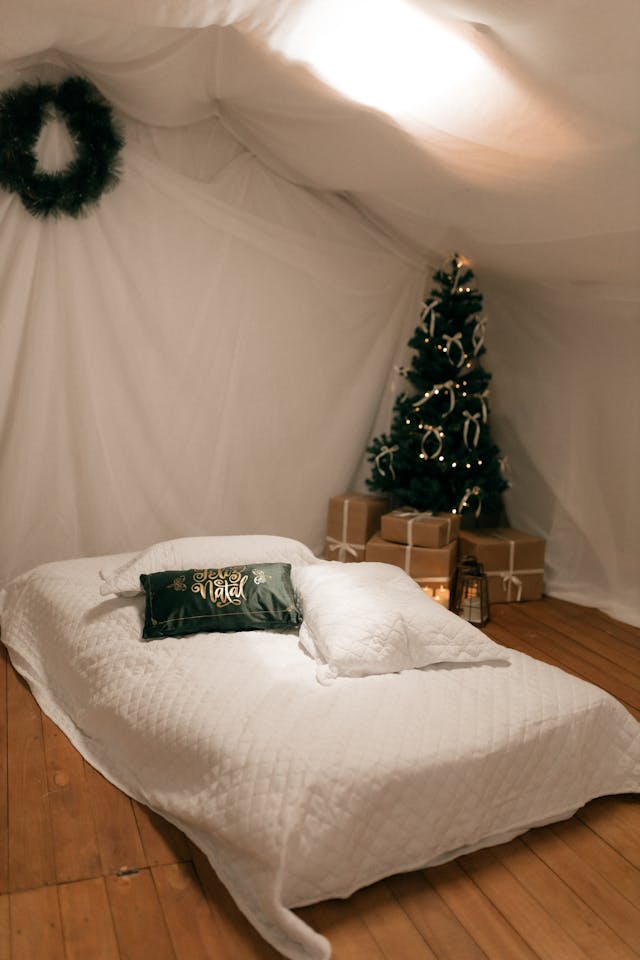Serene Bedroom Sanctuary: 10 Simple Steps to Create One
Want a Serene Bedroom Sanctuary fast? Start with soft colors, breathable bedding, layered warm lighting, and clutter-free storage; then add natural textures, a small relaxation nook, and tech boundaries. Keep your room cool (60–67°F), personalize sparingly, and let in daylight—these 10 steps turn your room into a calm, sleep-forward retreat.
Key Takeaways on Serene Bedroom Sanctuary
- Use a gentle palette (blues, greens, neutrals) to instantly signal calm.
- Choose breathable, natural bedding (cotton, linen, bamboo) for better sleep comfort.
- Layer warm, dimmable lighting and keep bright white bulbs out of the bedroom.
- Declutter and use hidden storage to maintain a peaceful, low-stimulus environment.
- Bring in plants and natural textures to make the space feel grounded and serene.
- Limit screens at night and aim for 60–67°F to support deeper, more restorative sleep.
The bedroom is more than just a place to sleep; it’s your personal sanctuary where you recharge and retreat from the outside world. Creating a Serene Bedroom Sanctuary takes a little thoughtful planning—from calming color choices to cozy bedding and lighting that soothes. Let’s dive into ten simple tips to turn your bedroom into a relaxing, restful haven.
1. Choose a Calming Colour Palette for Your Serene Bedroom Sanctuary
Quick answer: Stick to soft blues, greens, and gentle neutrals to lower visual noise and cue relaxation.
Why it works: Low-saturation hues reduce arousal and visual clutter, helping your brain downshift before bed. Aim for a 60/30/10 balance: 60% main wall color, 30% secondary textiles, 10% accents.
Do this today: Sample paint on a poster board; view it morning, afternoon, and night. Coordinate bedding and curtains within the same undertone family.
For energy flow that supports rest, explore Feng Shui principles for bedroom layout and align your palette with the room’s function.
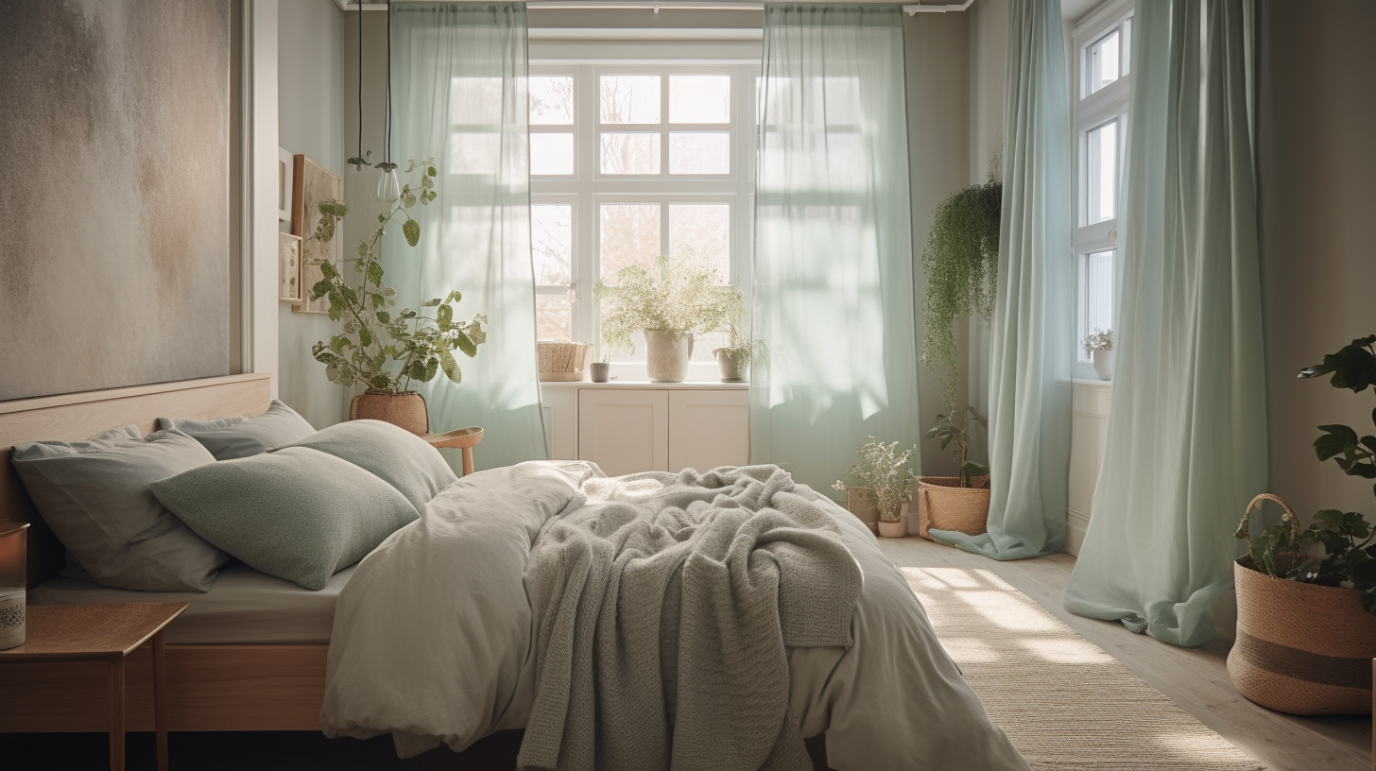
2. Invest in Quality Bedding
Quick answer: Choose natural, breathable fabrics and a mid-range thread count for softness and durability.
Fabric guide: Cotton percale = crisp/cool; cotton sateen = silky/warmer; linen = highly breathable/relaxed look; bamboo-viscose = smooth and moisture-wicking. Prioritize OEKO‑TEX or GOTS certifications.
Thread count sweet spot: 300–600 for cotton; for linen, focus on GSM (weight) over thread count. Layer a breathable duvet with a light quilt to extend comfort year-round.
Pair your linens with intentional placement using these Feng Shui bedroom tips for a holistic sleep setup. Also see our bedroom furniture & accessories guide for storage-friendly accents.
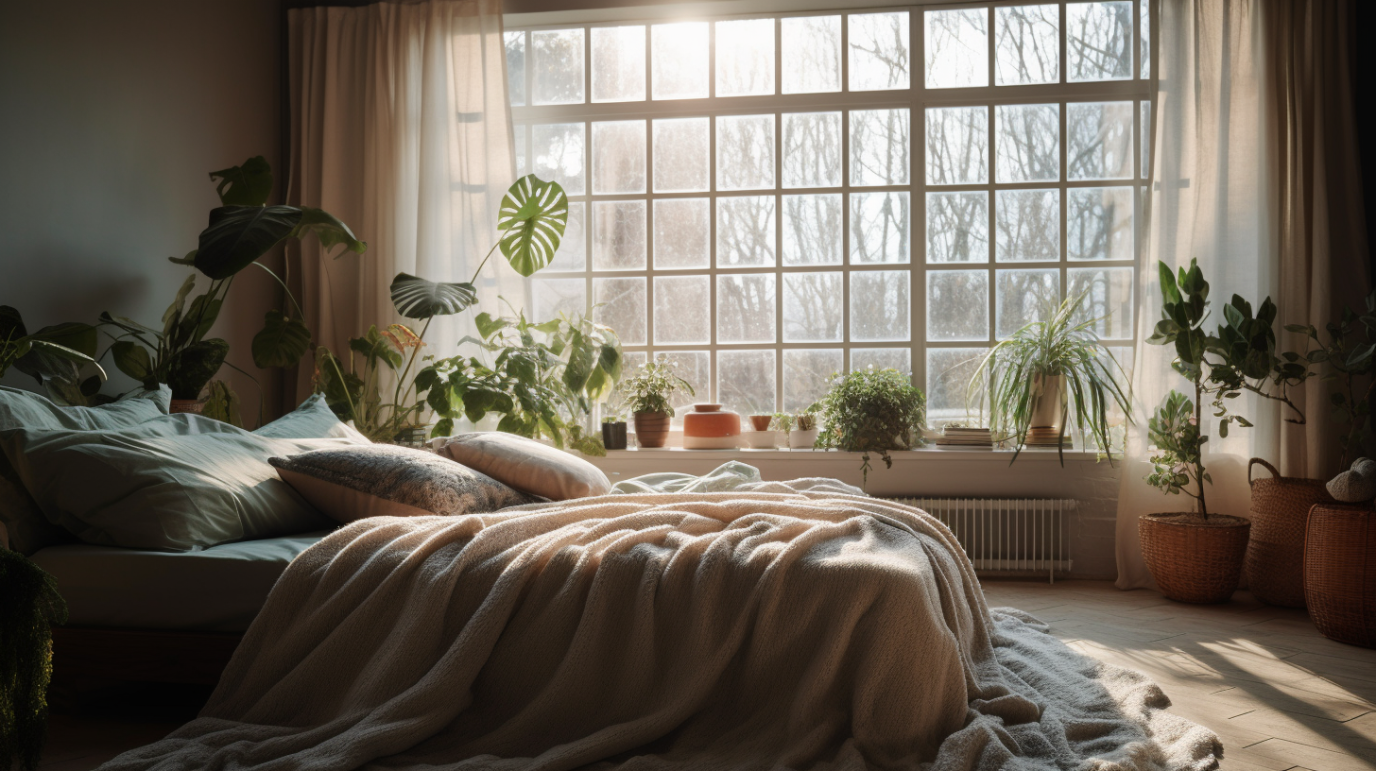
3. Maximise Natural Light
Quick answer: Invite daylight in the morning and block light at night to support circadian rhythms.
Daytime: Keep window sills clear, use sheer curtains, and position mirrors to bounce light deeper into the room.
Nighttime: Add blackout curtains or layered shades to protect melatonin. Consider a sunrise alarm to wake gently without glare.
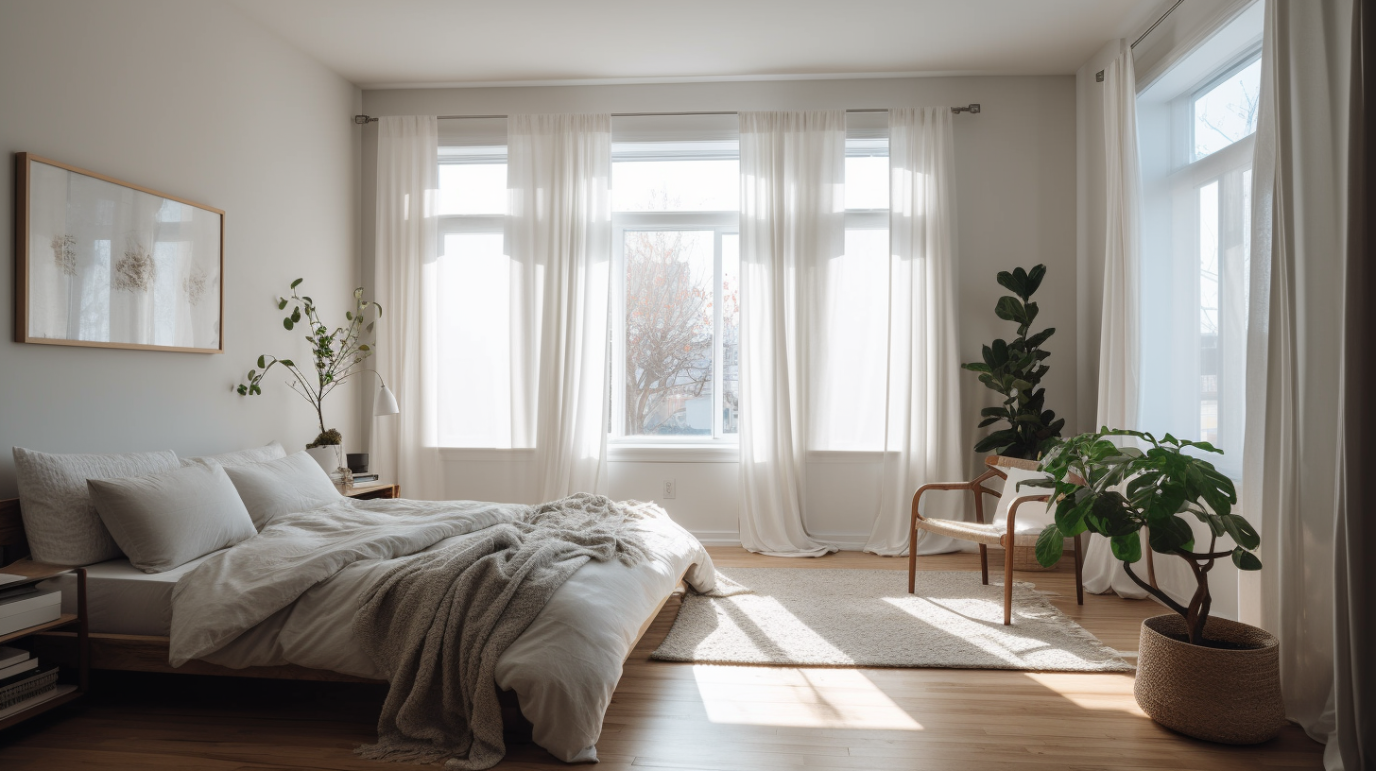
4. Incorporate Soft Lighting
Quick answer: Layer warm, dimmable ambient, task, and accent lighting—avoid cool-white bulbs at night.
How to layer: Ambient ceiling light on a dimmer + bedside task lamps (opaque shades) + low-glow accents (picture lights, LED strips under shelves). Choose 2200–2700K bulbs for evenings.
Pro tip: Use smart plugs or scenes to lower light gradually 60–90 minutes before bed to cue winddown.
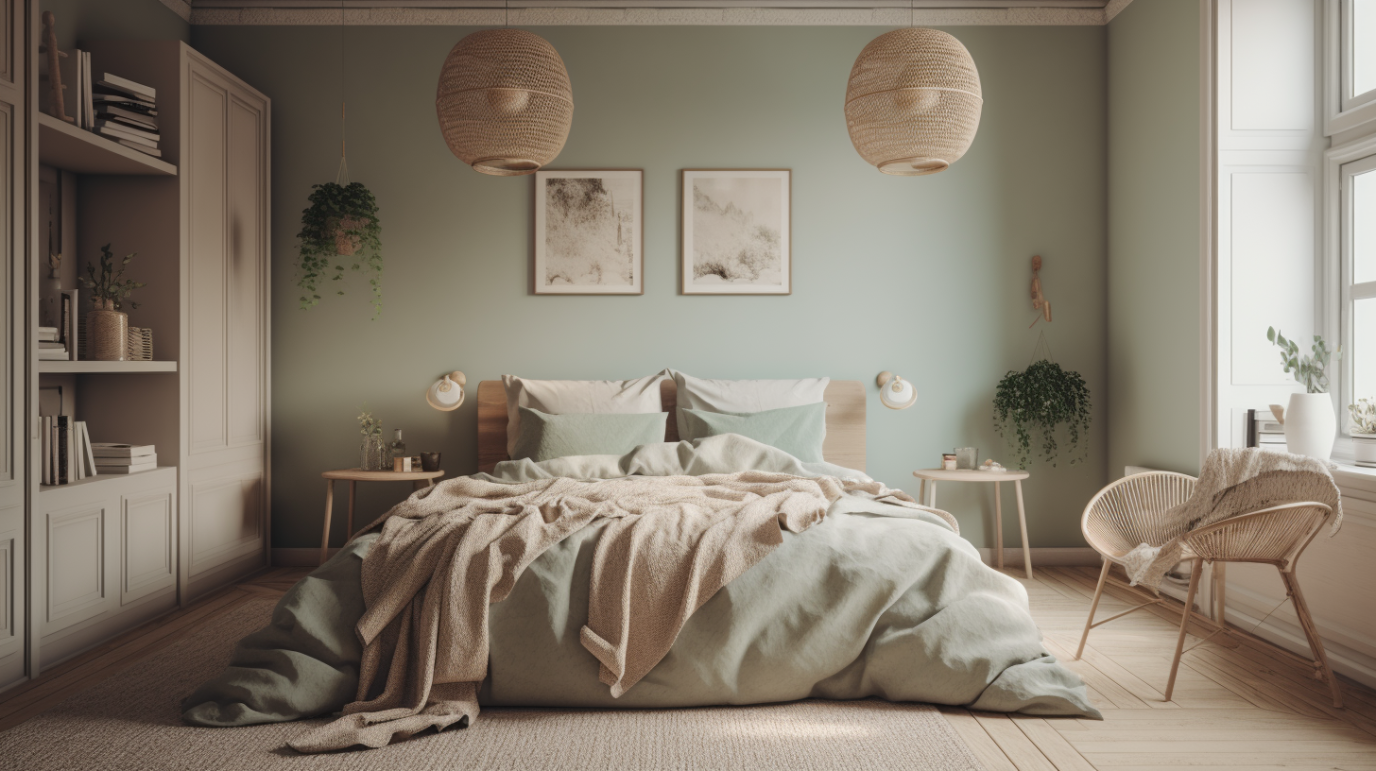
5. Declutter Your Space
Quick answer: Clear surfaces and hide essentials to cut stress and visual stimulation.
3-basket method: Keep, Re-home, Let Go. Touch each item once and decide. Store seasonal extras under-bed in rolling bins; keep only nightly essentials on the nightstand.
Good flow matters: see the importance of bed positioning in Feng Shui to maintain clear pathways and a grounded headboard wall.
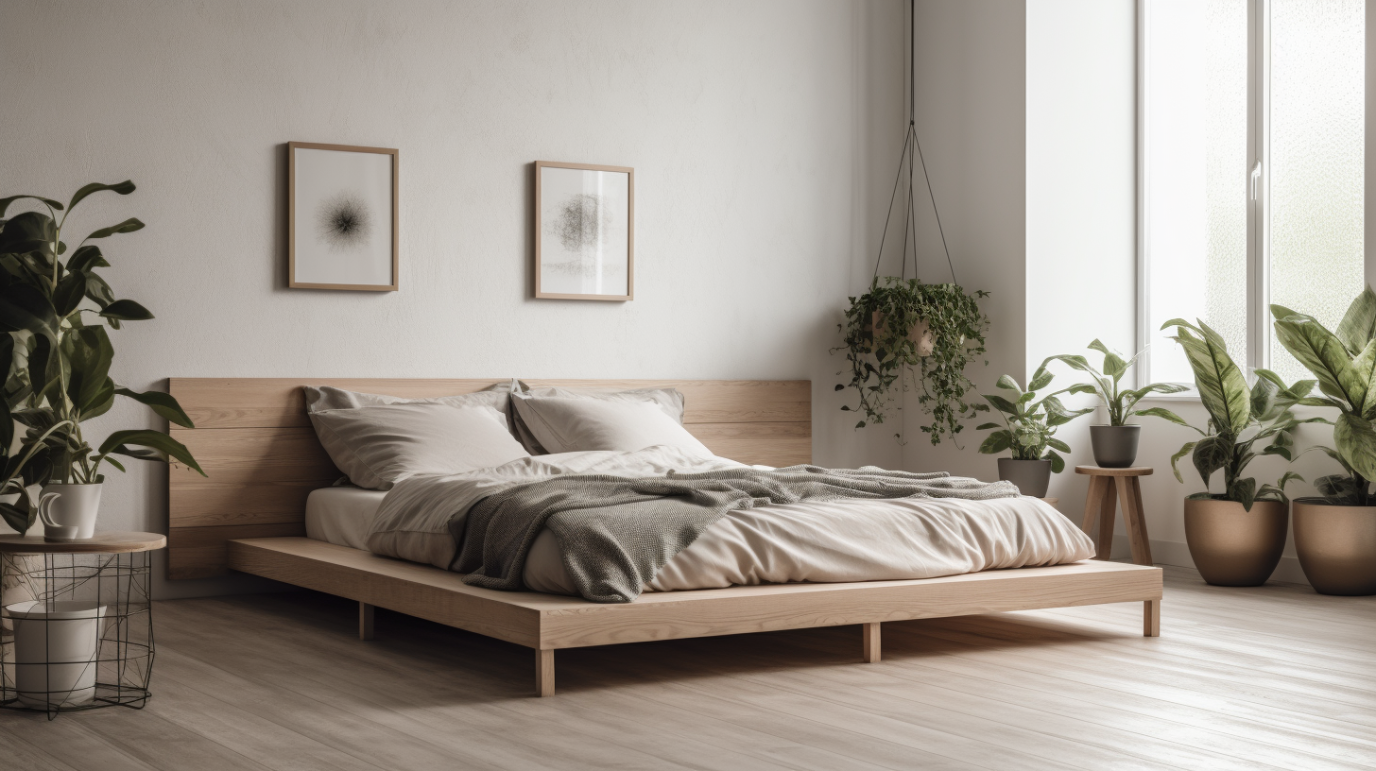
6. Add Personal Touches
Quick answer: Curate a few meaningful pieces—art, photos, or heirlooms—so the room feels personal without chaos.
Keep it intentional: Limit the gallery wall to 3–5 pieces in a cohesive color story. Use closed frames and soft textures (linen mats, wood frames) to maintain a calm visual rhythm.
Sustainability tip: Source secondhand frames or choose FSC-certified wood to keep your sanctuary eco-conscious.
7. Introduce Natural Elements
Quick answer: Plants, wood, stone, and natural fibers add soothing texture and biophilic calm.
Easy-care plant list: Snake plant, pothos, ZZ plant. Pair with linen throws, jute rugs, and a wooden tray to layer touchable textures.
Low-VOC finishes: If refinishing furniture, choose water-based, low‑VOC products to protect indoor air quality.
8. Create a Relaxation Zone
Quick answer: Carve a cozy corner with comfy seating, a throw, and focused task light.
Micro-nook recipe: Slender accent chair + floor lamp + side table + basket for your current book and lavender eye mask. Keep this space screen-free.
Budget idea: Use a plush floor cushion or pouf if space is tight; a wall sconce can replace a floor lamp.
9. Ensure Proper Temperature Control
Quick answer: Target 60–67°F (15–19°C) and support with breathable bedding and air movement.
Tips: Use a ceiling or pedestal fan for airflow, a programmable thermostat for steady temps, and moisture-wicking sheets. Swap in a lighter duvet insert seasonally.
Eco note: Seal window drafts and use thermal curtains to stabilize temps with less energy.
10. Limit Technology Distractions
Quick answer: Park devices away from the bed and switch to analog wind-downs.
Blue-light plan: Activate night mode at sunset and stop screens 60 minutes before bed. Charge devices outside the bedroom and replace doomscrolling with a short stretch, journaling, or breathwork.
Curious about devices that help (without over-stimulating)? See our take on innovative sleep technology and choose low-glow, schedule-based tools.
FAQ
- What colors make a bedroom feel most serene?
- Soft blues, greens, and neutrals reduce visual stimulation and promote relaxation in a Serene Bedroom Sanctuary.
- What bedding material is best for hot sleepers?
- Cotton, linen, and bamboo breathe well and help regulate temperature.
Conclusion
Designing a serene bedroom sanctuary is all about thoughtful choices—from soothing colors and soft lighting to cozy bedding and personal touches. By decluttering, bringing in nature, and setting tech boundaries, you’ll create a space that truly supports deep rest and relaxation.
Additional Resources
- Peacock Alley – The Linenry Blog
- Wool Bedding – Wool Blog
- Branch Basics – Home Blog
- Grandmother’s Home Blog

